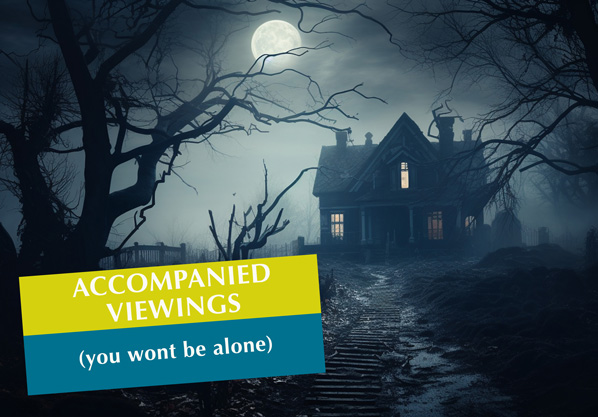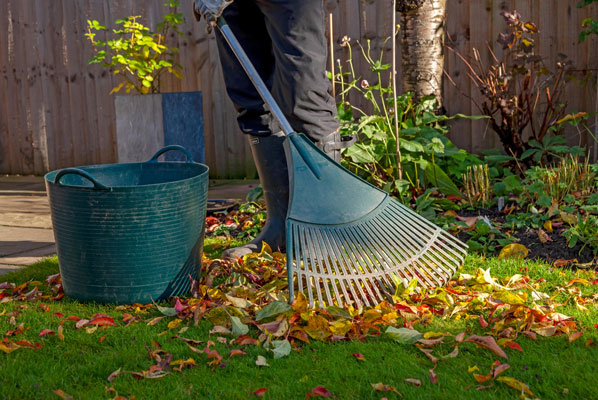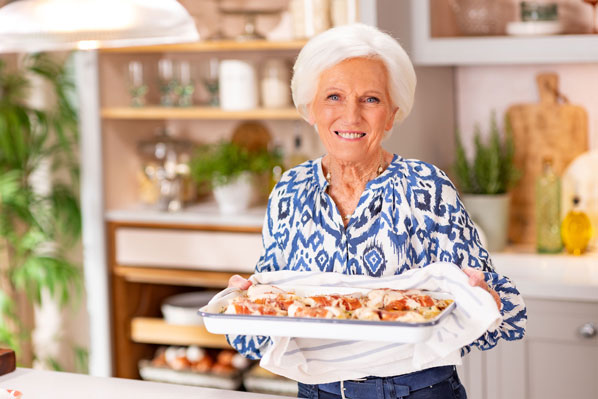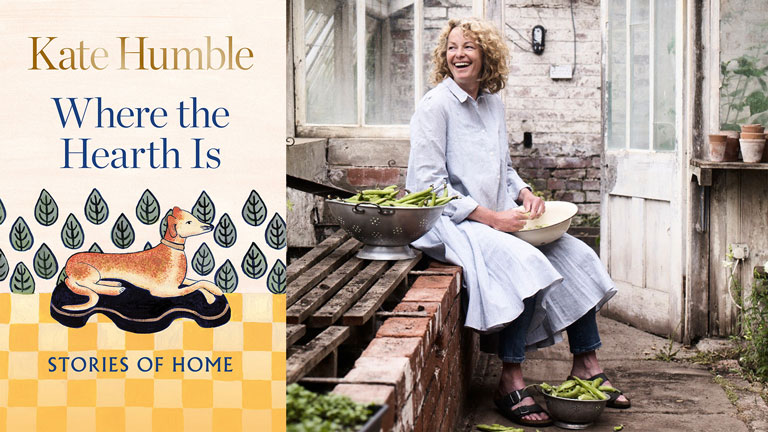Our Fleet team were yet again recognised by Rightmove as a top performing branch, so the team got a bit carried away with their social media video.
Would love to see the out-takes!
Our Fleet team were yet again recognised by Rightmove as a top performing branch, so the team got a bit carried away with their social media video.
Would love to see the out-takes!
With October showing a lates season up-tick in house sales activity, who knows what might be encountered on a house viewing during the days around Halloween celebrations (October 31).
Chances are there will be a few spine-chilling encounters, so the only question is do you dare take a look?
To find your perfect Halloween home start your property search here.
And don’t forget, at McCarthy Holden we do accompanied viewings.
By Hannah Stephenson, PA
It’s time for the great autumn clear-up in your garden, when furniture and tools are put away, leaves are raked and perennials cut back. But experts are advising gardeners not to tidy up too much.
Some of your debris could be left to provide food and shelter for overwintering insects, birds and mammals, so before you start raking, clearing away prunings and starting that autumn bonfire, spare a thought for our native wildlife.
Pile up your leaves
“Hibernating mammals, such as hedgehogs, frogs or toads will use leaf piles to create a nest where they will stay throughout winter, while insects and invertebrates will love the dark, damp nooks and crannies that it has to offer,” Eric Michels, head of pro at CJ Wildlife advises.
“In turn, this will encourage birds such as robins and sparrows to visit your garden to forage for worms and bugs in the leaf layer.
“Simply gather the leaves and dead organic matter from your garden or outdoor space and arrange them in a pile – don’t worry if your pile looks rustic, as long as it is large enough to allow wildlife to burrow within the materials, animals will love it!
“If you have any logs or fallen branches, place these next to the leaf pile to provide additional shelter and security, and make sure it is located in a quiet corner of the garden where visitors can stay undisturbed throughout winter. Come springtime, remember to check leaf piles for any animals before moving or mulching.”
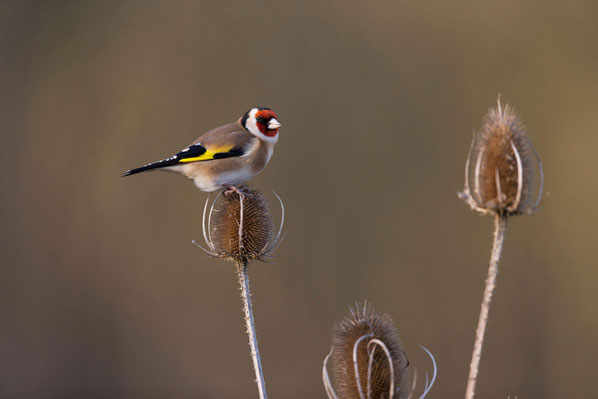
Leave seedheads
At this time of year, you may be tempted to chop down all your spent perennials, but leave seedheads on plants such as rudbeckia, echinacea, teasels and helenium, because they will provide food for the birds, the RSPB advises.
Stems can also hold insect larvae and eggs, and shield the soil from the winter elements, the charity adds.
Let wildlife shelter in log piles
“Broken twigs and old logs make an ideal shelter for many species, the rotting wood and brittle bark create cosy gaps for insects to hide in, while offering mammals a dry and secure habitat over the winter,” says Michels.
“Log piles also provide birds and amphibians with a source of food, as they search the debris for any insects which might be lurking inside.
“It’s important to keep the log pile in a quiet and sheltered part of the garden, as many species won’t stay if it is too noisy or there is too much activity nearby. A variation of small twigs and large logs creates the best shelter and larger logs can be wedged into the soil so they stay damp.”
Bring insect hotels indoors
“Insect hotels are a great way to offer bugs refuge through the summer, but many people don’t know that they should be kept in dry places over the winter months, like in the shed. This helps keep the hotels dry and in good condition, it also helps prevent fungal infections for bees that might be nesting inside,” says Michels.
“Do not be tempted to bring the insect hotel into the house though – the warmth of our homes might encourage bees to emerge from their nest early. The insect hotel can be placed back into the garden around March once the weather is warmer.”
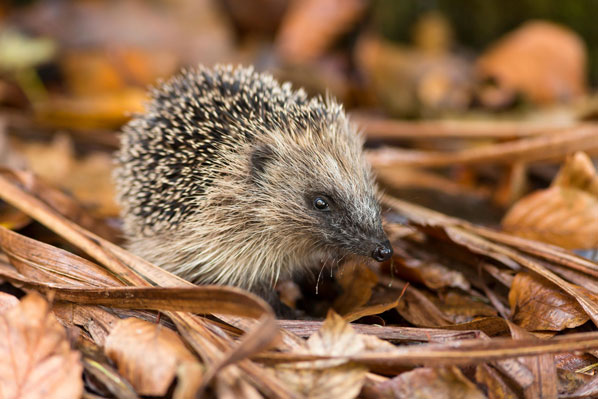
Avoid bonfires
You may want to burn your garden debris, but bonfire sites, which are often set up a few days in advance, provide a hedgehog hideaway for hibernation as well as shelter for amphibians and reptiles.
So if you really have to build it beforehand, surround it with newt fencing and make sure there’s no hedgehog sheltering in it before you start, advises campaign group Hedgehog Street.
Let ivy grow
It can be the bane of a gardener’s life, but ivy is an essential food source for birds and provides shelter for insects and bats in the autumn and winter months, says The Woodland Trust.
If you leave ivy to do its thing, its autumn flowers provide a haven to butterflies such as red admiral and moths, while it will produce calorie-rich berries in November which will attract song thrush, redwing and blackbird among others, as well as shelter for brimstone butterflies and small bats.
With a nip in the air and change in seasons comes a new dawn – and a natural desire to create a comfy, snug space ahead of the cooler months.
Alongside sumptuous textures, polishing up warm woods and ambient lighting, now’s also the time for seasonal candles.
Here, experts share their top tips for an autumnal aesthetic…
Forage for farmers’ market-style floral displays
“As we prepare for colder, darker months, it’s all about getting cosy and adding some extra touches that will make you feel cocooned and comforted,” says Charlotte Reddington, one half of styling and organising duo, Style Sisters. She says one of her favourite things things about autumn is the rich variety of textures and tones, from crunchy leaves to the abundance of changing colours in parks and gardens.
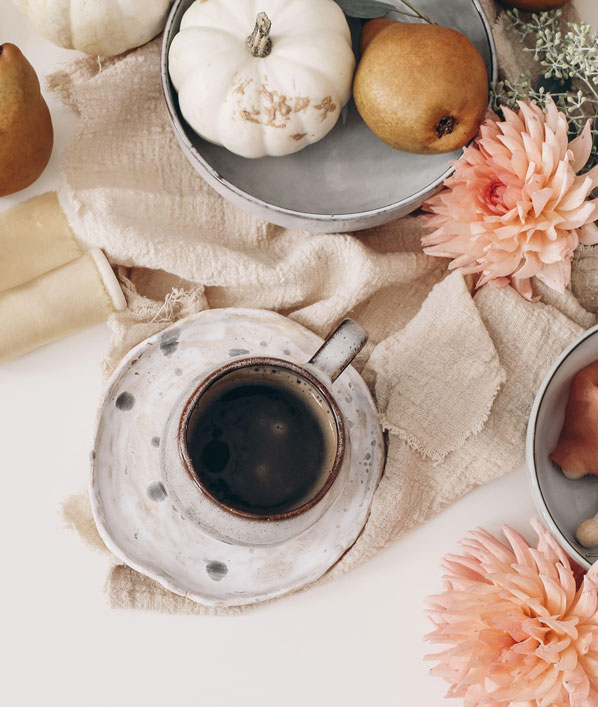
“Be inspired inside your home and think about how you can weave these elements into rooms,” suggests Reddington.
“This can be through the addition of a statement autumnal floral display, including a rich array of crimson reds, dark greens and burnt orange.”
And with pumpkin season in full swing, don’t forget this colourful squash can be styled with foliage, berries and autumn wreaths.
Embrace cosier fabrics
“Shorter daylight hours mean only one thing – cups of guilt-free hot chocolate and plenty of movie marathons,” says Dani Burroughs, head of product for Snug.
“To get into the autumnal spirit, start by swapping out summer fabrics for cosier ones, like soft velvets or fuzzy boucle,” enthuses Burroughs.
“Bring in warm, inviting colours – think rich browns, deep reds and rustic oranges. Not only will they help transition from summer to autumn, they’ll also create a relaxing and warm feeling that’s perfect for those lazy evenings on the sofa.”
Introduce ambient lighting
Clever lighting can totally transform a room and the overall atmosphere, highlights Reddington.
“A harsh overhead light isn’t always the cosiest for an autumn evening at home on the sofa! Think about placing a large floor lamp or table lamps for some mood lighting, which will create a calming ambience.”
She continues: “And with darker evenings as the clocks go back, it’s an important factor to consider for maximum home comfort.”
Dec out your dining room to combine function with beauty
Look to Scandinavian-inspired styles for a mindful, minimalist and meaningful take on autumn decor, suggests Francesca Hadland, interiors expert for Bridgman.
“Choose linen tablecloths and napkins, cutlery in classic styles and simple crockery while keeping to a colour scheme of just one or two main shades that imbue your space with warmth,” says Hadland. “Whether that’s a rust red or forest green.”
Ahead of the festive season, she says to make sure your guests feel comfortable with upholstered dining chairs – a personal favourite.
“Whether modernised by a metal frame or softened by a wooden leg, an upholstered chair is a beautiful way to ensure a sublime seating experience, while also adding an extra pop of colour to your dining room décor scheme,” notes Hadland.
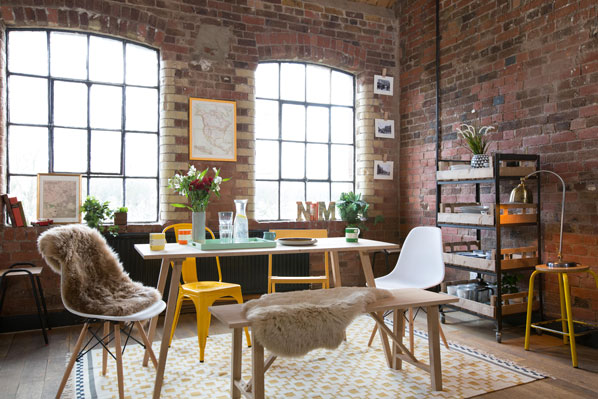
Embrace the biophilic trend
“Bring some new life into your home ahead of the colder months by incorporating air-purifying houseplants into décor,” says Rikki Fothergill, bathroom expert at Big Bathroom Shop.
Especially in bathrooms and kitchens, which she says is hugely beneficial for improving the quality of indoor air, regulating humidity levels and reducing the risk of more serious problems, like damp or even mould.
“Look to include species like ivy and fern as these are known to be great for maintaining air quality”, suggests Fothergill. “Spider plants are perfect too, and make for a great addition to any bathroom touching on the biophilic trend.”
Scent the season
One of the very first things you notice (sometimes unknowingly) when you enter a room isn’t just how it looks, but how it smells, notes Reddington.
“Scent can evoke memories, elevate an atmosphere, and help to change your mood – from energising and lifting, to relaxing and even aiding sleep… we really think it’s one of the most important aspects of a home.”
Candles and diffusers are the most popular and easy addition, says Reddington. “Not only can they smell amazing, but the design can add a stylish decorative touch to a mantlepiece or coffee table.
“An absolute autumn home essential,” she adds.
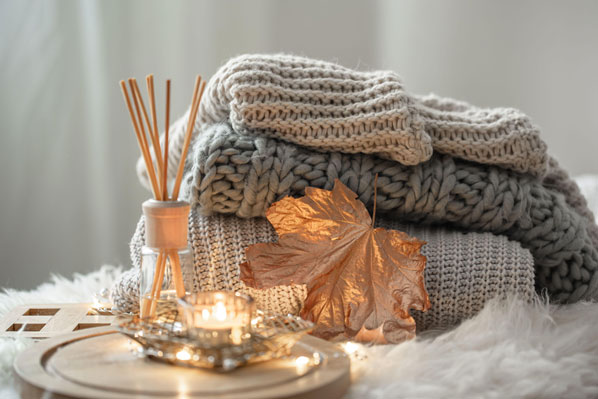
By Rachael Davis, PA Entertainment Features Writer
For some of us, cooking can be a real chore. You might feel like you’ll never understand how to put together a nutritious, delicious dinner for your family, or you might think you simply don’t have time to get into the kitchen after a long day at work while juggling after school clubs, homework, and all the rest.
In her new programme for BBC Two, Mary Makes It Easy, former Bake Off judge Mary Berry gets together with celebrities with various levels of cooking experience to teach them exciting dishes that don’t take a lot of time, effort or skill.
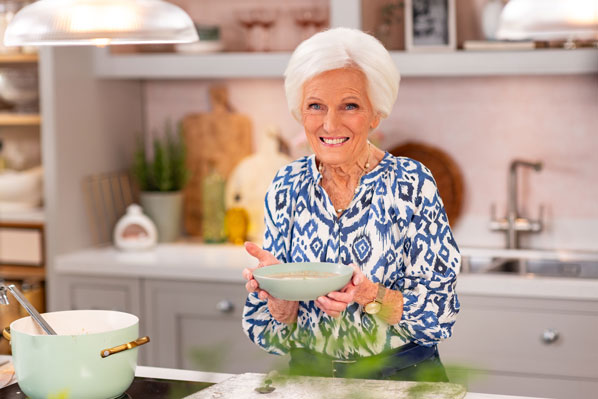
She joins her famous friends Mel Giedroyc, Jordan North, Anton Du Beke, Lorraine Kelly, AJ Odudu, and Michael Ball to guide them, and us at home, through some scrumptious recipes that even those who’ve never made toast without burning it will be able to whip up in a flash.
Let’s hear more from Berry, 88, about what she gets up to in the kitchen.
WHY DID YOU WANT TO SHOW PEOPLE HOW EASY COOKING CAN BE IN THIS SERIES?
I’d listened to what people say, and they want easy recipes, things that don’t take too long, too many ingredients, and perhaps, from ingredients that they (have) got in their cupboard. So Makes It Easy was good for me to do, because I knew everybody would love it. Nice shortcuts as well.
WHAT DO YOU THINK PEOPLE FIND HARD ABOUT COOKING?
I think they find it difficult because time is short, and they’re cramming so much into their lives… It’s the decision making.
I say: don’t make it complicated, make it on the simple side and follow the recipe. First of all, follow it exactly as it is written, read it through two, three times, and then place yourself thinking how it’s going to work… Choose a recipe that your family are bound to enjoy, and that’s achievable in the time that you’ve got.
I love a one pot dish. I’ve got a recipe that has a couple of chickens that have been spatchcocked – that means the backbone’s taken out. You can buy them already prepared, if you like, and put everything in one dish, all the roasted vegetables around it. Absolutely delicious.
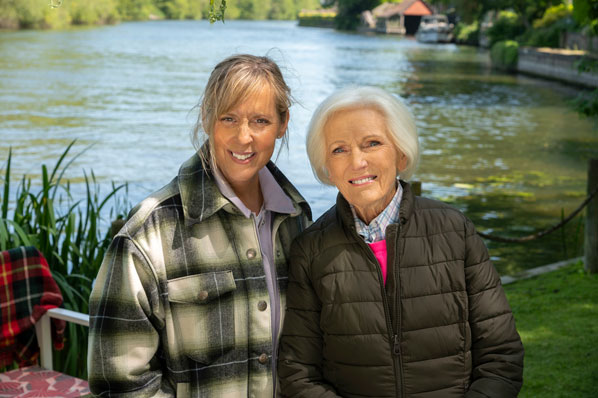
HOW WAS IT WORKING WITH THE CELEBRITIES IN THIS SERIES?
Well, all the people that I had wanted to learn to extend their repertoire, or to do something a little bit different.
Lorraine (Kelly) is not an experienced cook, at all. And she likes healthy food. I did a vegetarian mixed bean and red pepper chilli and thought it was lovely, and her daughter enjoyed it too.
Mel (Giedroyc), she’s already a good cook and just wanted a few more to add to her repertoire. She did a veggie ragu, which was all sorts of different vegetables, but all sorts of things that you’ve got to hand – who hasn’t got a bottle of red wine? And we’ve always got things like tomato, tinned tomatoes and tomato paste, and mushrooms. You know, not too unusual vegetables.
And some like cakes. Now, Jordan (North), not a very good cook, but was dying to make a cake.
His idea of a spread was something he called “picky tea”, and he just emptied all different bowls on the table and put the cubes of cheese in, peanuts, crisps – so this was stretching him!
I made, with him, a red velvet sandwich cake… It had a delicious texture which was given by buttermilk – that was a new thing for him, and a buttercream icing. And on the top, just bought truffles, the sort that I like, the white chocolate ones – that was delicious. He seemed to enjoy it.
I had Anton Du Beke, also. When I spoke to him, I said: “Well, what do you already cook?”.
He said: “I do eggs. I do boiled eggs, fried eggs, scrambled eggs, omelette”.
“Can you do anything else?”
“No!”
So it was perfect to show him how to do a chicken escalope with tzatziki. We always buy chicken breasts, don’t we? And to make them cook quickly, you just can beat them out, which is very, very simple.
You just put the chicken breast on a board and put some baking paper on top, and then bang it with a wooden rolling pin. And it will be double the size – well, not quite double, but a nice escalope.
We fry it with mustard, and parsley on top and chopped dill, and that goes into the pan with it. And it is delicious.
YOU MENTIONED MEL THERE. OF COURSE, PEOPLE LOVE SEEING THE TWO OF YOU TOGETHER, BUT THIS IS THE FIRST TIME YOU’VE COOKED TOGETHER, AND YOU GO CAMPING! HOW WAS THAT?
It was just as much fun as playing cards with her, we used to do that…
We think alike. We have great fun. And of course, she is very bright and took to camping. I mean, she does camp with her family in the Lake District, and so she was certainly guiding me with putting up tents and things, and I would tell her all about cooking.
WHAT’S YOUR BEST ADVICE FOR PEOPLE STRUGGLING WITH COMPLICATED MEALS, OR WITH TIME TO COOK?
Well, don’t choose complicated recipes! Choose simple recipes. And it’s very important that you take on board the sort of food that your family enjoys.
Check that you’ve got all the ingredients together, and perhaps choose something that you could cook double the amount of and put some in the freezer for next week. It’s nice to look in your diary and say: “I’ve made a note that I’ve already cooked that, and it’s beautifully cooked, in the freezer – all I’ve got to do is reheat it!”
Mary Makes It Easy starts on BBC Two at 7.30pm on Thursday, November 2.
What makes a house a home? Is it the building itself, the possessions inside, the people that live there, the location or community?
It’s probably all of these to some degree, says Kate Humble, who delved into the topic for her new book, Where The Hearth Is – sparked by the TV presenter’s own quest to understand why a London Victorian terraced property she thought would be her ‘dream home’ never really felt like it, but the Welsh farmhouse she later moved to did.
“Before I moved to Wales, my husband and I had bought a derelict house in London. We spent 18 months sleeping on kind friends’ sofas, giving everything we earned to the builders to try and make it un-derelict and create what we thought was going to be our absolutely perfect house, with a lovely kitchen, all our bookshelves and pictures on the walls, and all the elements we believed would make it the perfect, happy home,” explains Humble, 54.
“And what was really odd and actually rather distressing was the day we moved in and unpacked, we thought that instantly it would be home. It wasn’t. And it never felt like home, and I couldn’t work out what we’d done wrong.”
She repainted walls, moved pictures, furniture and even walls in a bid to fix the issue: “I drove my husband completely mad. For the whole seven years we were there, I basically battled to try and make this house a home.”
She eventually realised the problem wasn’t so much the house, but the location. “The reason that poor house was never going to be home was that I wanted it to make me believe London was home, and it couldn’t do that.”
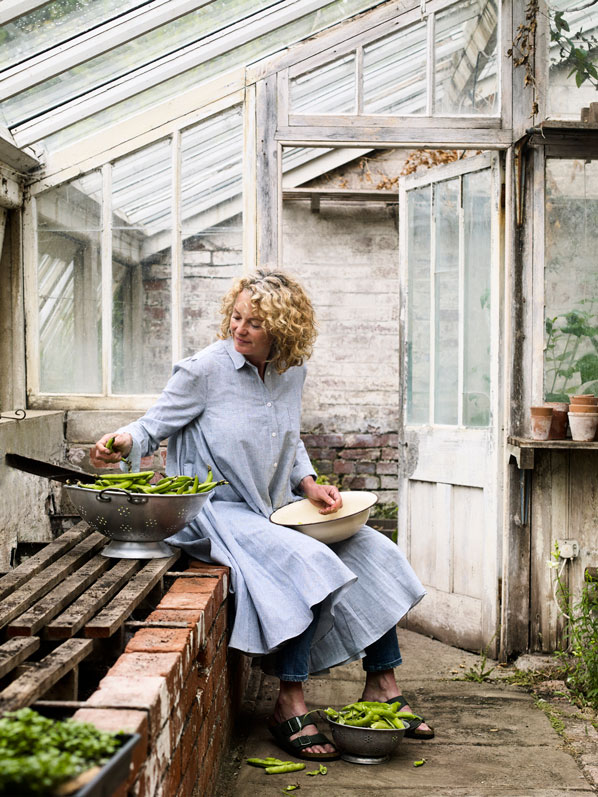
Humble’s TV career has always focused on the countryside and nature, with shows like Springwatch and Countryfile, and for a long time she’d harboured a desire to live in rural Wales.
“I was never a city girl, I was brought up in the countryside,” she explains. “I had for quite a long time wanted to be back in the country, but because of my job, doing things like Springwatch, lots of wildlife programmes and programmes that took me out into the countryside, I could manage coming back to London. But it just ceased to feel like home.
“I had this weird, inexplicable – and I still haven’t worked out why this was the case – longing to live in Wales, even though I have no family history in Wales or heritage, and I hadn’t even really been on holiday there. I didn’t really have a connection. But for some inexplicable reason, I really, really wanted to live in Wales.”
Then, “completely out of the blue” in 2007, Humble’s TV producer husband Ludo was offered a job in Cardiff. “It was like fate was intervening.”
The couple bought an old stone farmhouse with four acres of land in the Wye Valley. “As soon as I got there, I knew I had found my home,” she recalls. “There are many elements of that, but I think it was instant because I was back in the countryside, and those were my roots, even though it wasn’t geographically where I’d grown up, I had grown up in a rural area – and I was back in a rural area and suddenly I felt like I belonged again.”
Yet although Humble, her husband and their dogs have lived happily in the farmhouse in Wales for the last 16 years, running the Humble by Nature working farm and rural skills centre nearby, they may still not be in their ‘forever home’ – which is what sparked the idea for the book.
“For a long time, I’ve wanted to build a house of my own,” she reveals. “I’ve got the design in my head – I’ve always been fascinated by the idea of creating the place that I end up living.
“But the thing that worries me is, I might build this house one day that I think is perfect – but what will it be that turns it from a building I’ve imagined in my head, a physical thing, into the nebulous but nonetheless essential thing that makes it a home? What will shift it from simply being a building with furniture and a bed, into the place where you feel safe and secure and at home? What do I need to do to make sure that I don’t repeat the experience I had in London?”
Humble was so worried about this, she wrote long lists of the sort of people that might be able to give her insight into what makes a house a home. “I started off by thinking that would help me build a thesis, a kind of Humble theory of what makes a home, if you like.”
She spoke to many people, compiling stories for the book – ranging from brother and sister Willie and Ruby Brown, both in their late 70s, whose home (a 150-year-old family stone croft on the west coast of Shetland, where they’d been born and raised) was struck by lightning and destroyed, to a Syrian woman who lost not just her home in the war, “but her community, her culture, her language, everything she knew”, explains Humble.
“She had to start from scratch, trying to make a home in a country that wasn’t hers, and the thing she said made the UK feel like home was the kindness of people.
“What I learned was home doesn’t stop or start when you walk into the front door – it’s more than that,” Humble adds. “And for a lot of people – and I would include myself in this – community is really important, what’s around you, what do you look out at through your window?
“Of course, there’d be things that all of us, if they were lost through fire, flood or whatever, we’d probably mourn. But ultimately, possessions are ephemeral – one day they’ll fade, fall apart, or get lost. Whereas the people in your life are the fabric of your home. When I walk around my house and think what would I grab if the house was on fire, I think, well I’d grab my husband and my dogs,” Humble reflects.
“What I discovered is what makes a home is incredibly personal and individual to each person. But if you have a place you can genuinely call home, where you feel safe and secure and it’s your refuge, actually, you’re very lucky.
“Through talking to all these people and putting this book together, I realised how precious home is.”
Where The Hearth Is: Stories Of Home by Kate Humble is published by Aster, priced £22. Available now.
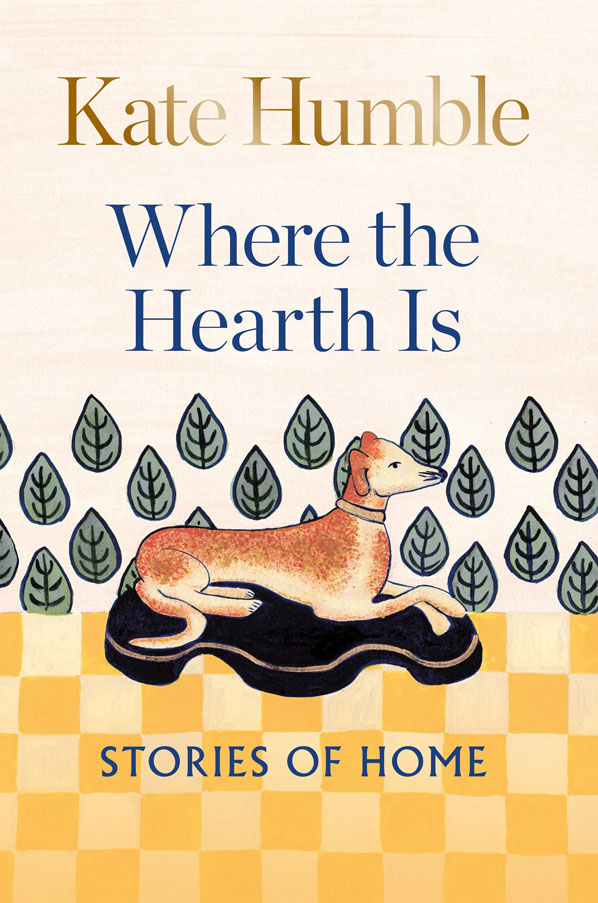
“Sold before it went on the market for more than a rival agent was planning to market it for. One viewing and very smooth transaction.” Fleet House owner
©McCarthy Holden 2024.

